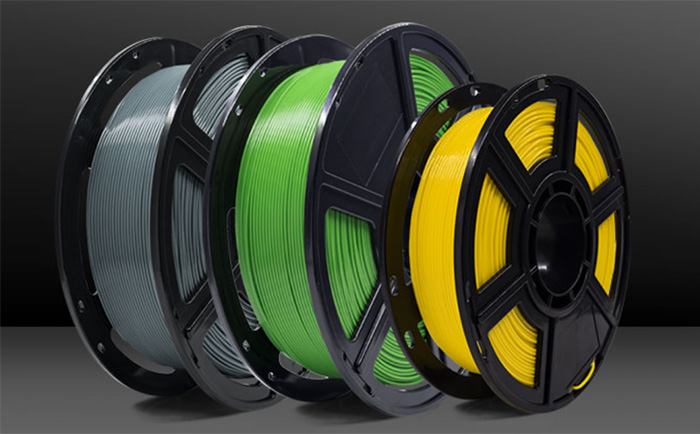3D printer filament is often means the consumable for FDM 3 D printer, which is often a long thermoplastic thread twining around a spool. A spool of filament is usually set 1kg filament or 0.5kg filament. Among so many kinds of filament, such pla filament, ABS filament, and PETG filament, which is proper for your 3D printer? Which one shows better printing quality on your 3D printer while a maintaining a reasonable price? See this article! Helping you make a wide decision when selecting a filament for your 3 D printer!
1. Checking the appearance of a filament
First getting your filament, please check its package carefully. A new filament product is sealed well for moisture-proof purpose. You need to check carefully whether the packaging is air-leaking. We know that filaments like ABS, ASA, and TPU are easy to get moist when exposed to air, which will lead to bad printing results. A good filament product pays much attention on good packaging. PLA filament is the most often used for normal consumers.
Besides, observe the 3D printer filament texture. To meeting individualized needs, users often purchase filaments of different colors. You need to check whether the color is dispersed evenly and whether there are color stains within the filament thread. Those are important signs reflecting whether the filament material is cleaned carefully and clearly during process.
2. Checking the diameter accuracy of the filament
Diameter accuracy of the 3D printer filament is another key factor affecting printing quality. The uneven diameter may lead to insufficient supply, breakage, or overflow of liquid filament that should be evenly and stably extruded by the nozzle. Overflow may result in nozzle block or unpleasant bumps on printouts; insufficient supply of liquid filament may cause printing breakage or failed print. While filament’s diameter deviating within reasonable tolerances is acceptable, you should carefully check it.
There are two usually-used specifications for filament diameter of a 3D printer, one is 2.85mm in diameter and the other is 1.75mm. In general, there is no essential difference between the two in terms of physical properties. Two different diameters are made because of different 3 D printer extruder designs.
3. Observing the final print result
Sometimes you'll see that with the same 3D printer, the same slicing setting, and the same printing environment, your first printing was successful while the send try failed. Why? Different filament options. When using low-quality filament, you may meet such issues as nozzle clog, model layer dislocation, or none smooth surface of the printed model. It's quite important to get a filament product sample and test its printing effects before large-amount purchase of a certain 3D printer filament.
4. According to your real needs
Where your printouts would be applied is the basic factor deciding what ingredient materials and physical properties the filament has. If you want to print a model car tire or a mobile phone case, you should select flexible 3D printer filaments like TPU95A; If you want to print a stuff with high strength and toughness as well as resistant to UV light and outdoor weather, you’ll select ASA filament.
Final words
This article shows tips on how to properly select filaments for your 3D printer, respectively from the perspective of filament appearance, the diameter accuracy of the filament, printing effects of the filament, and the filament’s final application. Of course, what filaments your 3D printer supports for printing is another vital stuff. Carefully read the product manual would help you a lot.
Meeting any problems on 3D printer printing you can also contact the official user group and find resolutions there!





